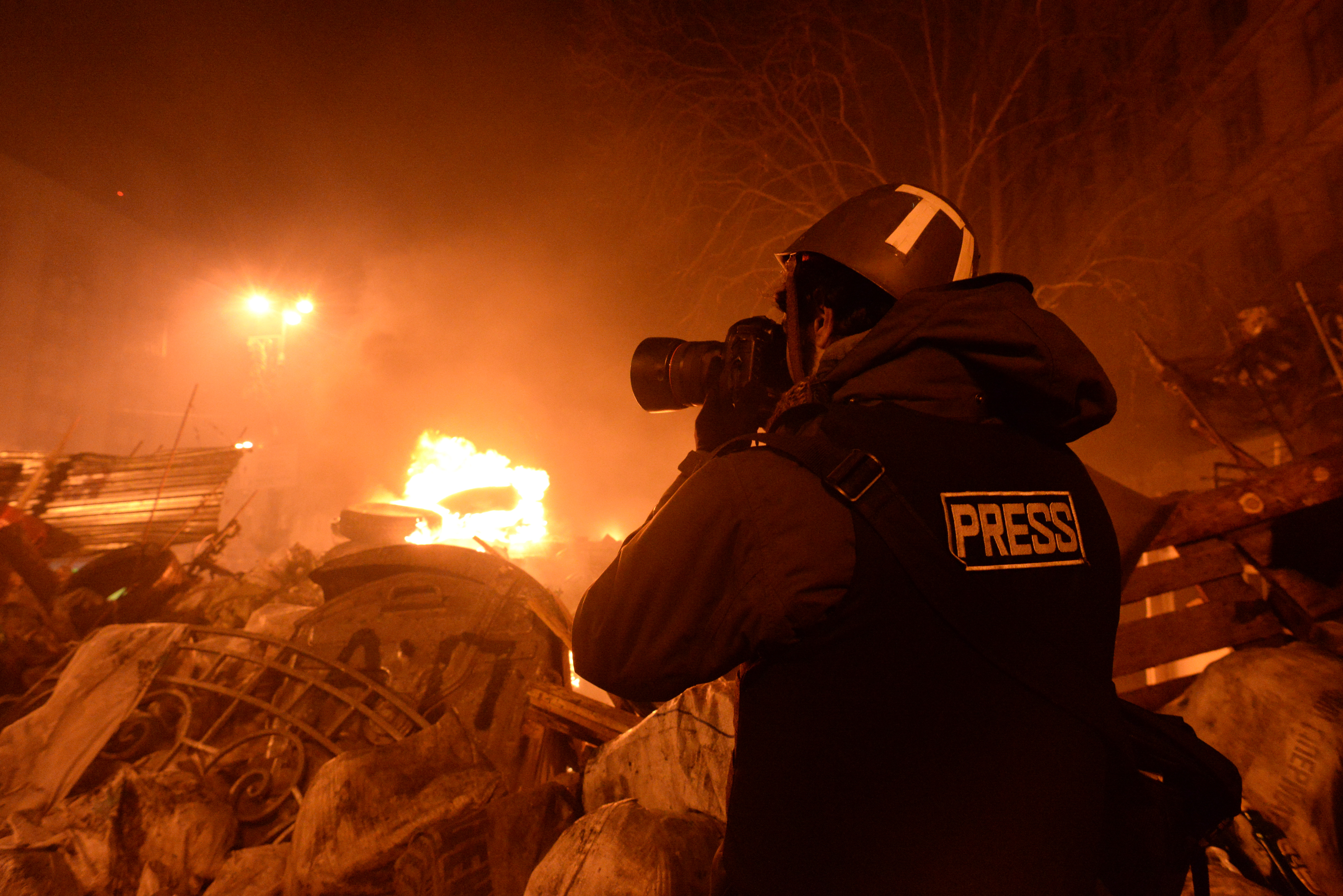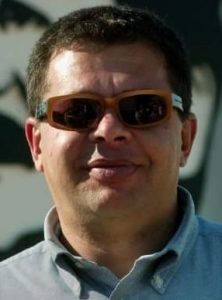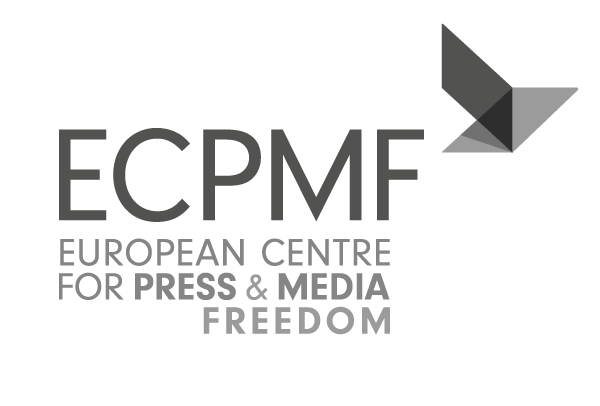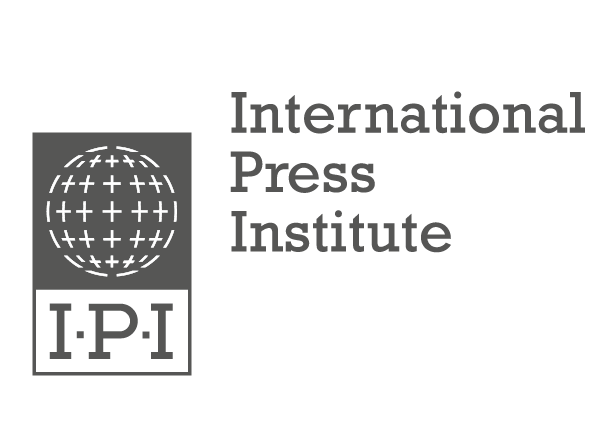[Leggi la versione italiana qui sotto.]
By Nello Scavo
The worst enemy of journalists and journalism is not crime, but the state lie. A state that lies when faced with journalists’ investigations is a state that legitimises those who threaten and intimidate journalists. A state that favours and stimulates acts that discredit and marginalise journalists sets the foundations for the legitimising of acts that threaten and silence journalists everywhere.
A year ago in my newspaper, we published evidence of “secret negotiations” between Italian national institutions and Libyan militias involved in the trafficking of people, oil and drugs. Since that day, we have not received any co-operation from government officials who have preferred to remain silent or lie.
There was a series series of lies, omissions, deception – even silence
Most of the clarifications are still missing. The only certainty that is known is that the commander al-Milad – known by the alias ‘Bija’ – was still officially at the helm of the so-called Zawyah Coast Guard until only a few weeks ago. This was made possible by the agreements of the Tripoli-Rome-Brussels axis that did little to prevent the leaders of the Libyan mafia from capitalising on the certainty and retaining the full freedom to manoeuvre. Bija had arrived in Italy as an officer of the Zuara Department Coast Guard, but the Italian authorities were already aware of Bija’s conduct. The Italian Ministry of Defence had published a report, dated 10 May 2017, which explained that Bija had “controlled smuggling activity from West Tripoli to the Tunisian border since 2015”. However, only one day after the publication of the report, on 11 May 2017, Bija was in Italy, in Sicily, to take part in one of the meetings established after the signing of the Memorandum of Undertanding between Rome and Tripoli to combat “illegal immigration and human trafficking”, signed on 2 February 2017 and renewed on 2 February 2020.
In our reporting over the following months, we revealed their connections with the international smuggling of oil, arms and drugs, in connection with Italian mafia.
Ultimately this means that Italian political decisions had indirectly supported organised crime both in Italy and Libya.
But there are questions that the Italian government has never answered. Who were the members of the Libyan delegation that arrived in Italy in 2017? Neither Tripoli nor Rome has come forward with information regarding the composition of the delegation who travelled to Italy for a series of meetings in Italy aimed at stopping the migration flow, without obtaining in return a commitment to end the abuses in Libyan prison camps. It was only from analysing published images from the meeting, alongside the limited official information shared by anonymous sources that we could determine that at least 13 people had arrived from Libya. Documents also in our possession make it clear that they were emissaries from the Tripoli Ministry of the Interior and other departments of the government of Prime Minister al-Serraj. An official photo shows them in Rome at the command of the Italian Coast Guard. So why not disclose their names and assignments? Another question that needs to be answered is: who decided on the make-up of the delegation? Sources from the Italian government at that time (it was 2017), as well as their successors in government claimed that the Libyan delegation was invited by the International Organisation for Migration. However, the UN agency disputes this, stating that they had no role in the composition of the Libyan delegation, which was selected by unknown authorities in Tripoli and accepted by Italy.
There is also something else: who circulated the false news about Bija’s forged documents?
Anonymous Italian government sources quoted by press agencies immediately after the publication in my newspaper of the images taken in Sicily declared that Bija must have deceived the consular authorities in order to enter Italy. Instead, as was later proved, he had arrived with an authentic passport and a regular visa granted by the Italian Embassy in Tripoli. This requires an answer to another question: what was the agenda of the Libyan delegation?
Months after the journalistic revelations, the mystery remains: which ministries were visited and which officials met with Bija, and why?
Should we give the Italian government the benefit of the doubt? In 2017, did Italian authorities know who Bija was? However, perhaps we should not be so generous as it was declared by government sources in “off the record” briefings that at the time Bija was not being pursued by the United Nations. This was contrary to the findings of a number of journalists, media outlets and reports from humanitarian organisations, Yet, only a few days before the visit to Italy, the High Studies Centre of the Italian Ministry of Defence identified Bija as one of the leading human traffickers who is also involved in the smuggling of hydrocarbons (oil).
I wanted to summarise the salient questions regarding this case because the silence that comes from unanswered questions was intended to discredit the work of journalists. But it went further; the silence was a clear message to their Libyan counterpart and everyone who was watching that secrecy was to be defended at all costs – not transparency nor openness. Every time this attitude of government institutions is repeated, journalists’ lives are in serious danger. If it is a choice between protecting reporters and obscuring the actions carried out by the criminals, too often the State chooses the latter.
It happened to Daphne Caruana Galizia in Malta, it happened to Ján Kuciak in Slovakia and to Anna Politkovskaya in Russia. The tension between secrecy and transparency, silence and answers represents the common denominator of crimes against journalists. Without this awareness, no initiative to protect free information can be successful.
Because, after all, it is not the safety of a single journalist that is threatened, but the right of an entire community to be freely and frankly informed.

About the author
Nello Scavo has written for the newspaper Avvenire since 2001. Over the years, he has investigated organised crime and global terrorism, reporting from areas such as the former Yugoslavia, Cambodia and Southeast Asia, the countries of the former USSR, Latin America, Turkey, Syria, the Balkan route, the Horn of Africa and the Maghreb. In September 2017 he entered a Libyan migrant smugglers’ prison, describing the conditions of the trapped migrants.
Since October 2017 he has been living under police escort, due to threats from Libya and Malta in relation to mafia groups in Italy. He has won several Italian journalistic awards, including the Prize for Freedom of Information.
ReportIt calls for all people to stand in solidarity with at-risk journalists and media workers by reporting all violations of media and press freedom to Mapping Media Freedom. Help us fight the normalisation of threats against journalists and stand up for media freedom by taking part here: https://www.mappingmediafreedom.org/report-it
#ReportIt: Le autorità italiane hanno più interesse a mantenere i patti segreti con i criminali che a proteggere l’informazione?
Il peggiore nemico dei giornalisti e del giornalismo non è il crimine, ma la menzogna di Stato. Uno Stato che mente davanti alle inchieste dei giornalisti, è uno Stato che legittima chi minaccia e intimidisce i giornalisti. Uno Stato che favorisce e stimola il discredito, l’emarginazione, fino a legittimare con i suoi complici silenzi l’eliminazione fisica dei giornalisti.
Un anno fa con il mio giornale abbiamo pubblicato le prove della “trattativa segreta” tra istituzioni nazionali ed esponenti delle milizie libiche coinvolti nel traffico di esseri umani, petrolio e droga. Da quel giorno non abbiamo ottenuto alcuna collaborazione dagli esponenti di governo che invece hanno preferito tacere o mentire.
La serie di menzogne, omissioni, depistaggi, perfino di omertà, conferma quanto sul «caso Bija» ci sia molto ancora da scoprire. La maggior parte dei chiarimenti manca ancora. Unica certezza, il comandante al-Milad, noto con il “nome de guerre” Bija, fino a poche settimane fa era ancora ufficialmente al timone della cosiddetta Guardia costiera di Zawyah, per merito degli accordi sull’asse Tripoli-Roma-Bruxelles. Negoziati che non hanno impedito ai capi della mafia libica la piena libertà di manovra. Bija era arrivato in Italia come ufficiale della Guardia costiera del dipartimenti di Zuara, ma le autorità italiane erano a conoscenza della condotta di Bija già prima delle Nazioni Unite e il Ministero della Difesa italiano aveva pubblicato un rapporto, datato 10 maggio 2017, in cui si spiegava che Bija aveva “controllato l’attività di contrabbando dall’Ovest di Tripoli al confine con la Tunisia dal 2015”. Tuttavia, solo un giorno dopo la pubblicazione del rapporto, l’11 maggio 2017, Bija si trovava proprio in Italia, in Sicilia per prendere parte ad uno degli incontri stabiliti dopo la firma la firma del Memorandum of undertanding tra Roma e Tripoli per combattere “l’immigrazione illegale e il traffico di esseri umani”, firmato il 2 febbraio 2017 e rinnovato il 2 febbraio 2020.
Nei mesi successivi abbiamo svelato le loro connessioni con il contrabbando internazionale di petrolio, armi e droga.
Ma ecco alcune domande a cui il governo italiano non ha mai risposto. Chi erano i membri della delegazione libica giunta in Italia nel 2017? Né da Tripoli né da Roma è mai stata divulgata la composizione della rappresentanza partita dal Paese nordafricano per una serie di incontri istituzionali in Italia finalizzati a bloccare il flusso migratorio, senza ottenere in cambio la fine degli abusi nei campi di prigionia in Libia. Incrociando le informazioni da fonti ufficiali, che continuano a implorare l’anonimato, e analizzando le immagini pubblicate, si è avuta la certezza che dalla Libia fossero arrivate almeno 13 persone. Documenti anche in nostro possesso chiariscono che si trattava di emissari del ministero dell’Interno di Tripoli e di altri dipartimenti del governo del premier al-Serraj. Una foto ufficiale li ritrae a Roma presso il comando della Guardia costiera italiana. Perché allora non divulgare i loro nomi e i loro incarichi? Altra domanda: da chi sono stati selezionati i componenti di quella delegazione? Fonti del governo italiano di quell’epoca (era il 2017) e altre del governo attualmente in servizio hanno sostenuto che i libici sono stati invitati dall’Organizzazione mondiale delle migrazioni (Oim). Ma dall’agenzia Onu assicurano di non aver avuto voce nella scelta dei componenti libici, individuati da Tripoli e accettati dall’Italia. C’è anche altro: chi ha fatto circolare la falsa notizia sui documenti contraffatti di Bija? Fonti anonime del governo italiano, citate da alcune agenzie di stampa, subito dopo la pubblicazione delle immagini scattate in Sicilia e pubblicate dal mio giornale hanno dichiarato che Bija avrebbe raggirato le autorità consolari. Invece, come poi è stato dimostrato, lui era arrivato con passaporto autentico e un regolare visto concesso dall’ambasciata italiana a Tripoli. Ancora: quale è stato il programma di viaggio della delegazione libica? Anche su questo a distanza di mesi dalle rivelazioni giornalistiche il mistero permane. Quali ministeri sono stati visitati? Quali funzionari ha incontrato Bija? A quale scopo?
Infine: l’Italia nel 2017 poteva non sapere chi fosse Bija? È stato dichiarato da fonti governative “off the records” che all’epoca Milad, accusato da inchieste giornalistiche e report di organizzazioni umanitarie, non era perseguito da provvedimenti Onu. Eppure, solo pochi giorni prima della visita in Italia, il Centro alti studi del Ministero della Difesa italiano lo indicava tra i capi del traffico di esseri umani coinvolto anche nel contrabbando di idrocarburi.
Ho voluto riassumere gli interrogativi salienti di questa vicenda perché tutti questi silenzi hanno avuto lo scopo di screditare il lavoro dei giornalisti, ma soprattutto le menzogne e le omissioni sono state un chiaro messaggio alla controparte libica. Come se le autorità italiane avessero maggiore interesse nel custodire i patti segreti con i criminali, anziché proteggere l’informazione. Ogni volta che questo atteggiamento delle istituzioni governative si rinnova, la vita dei giornalisti è messa in serio pericolo. Perché tra l’impegno dei reporter e le azioni compiute dai criminali, lo Stato dimostra di scegliere i secondi.
E’ successo a Daphne Caruana Galizia,è accaduto a Ján Kuciak come ad Anna Anna Stepanovna Politkovskaja. E’ questo il comune denominatore dei delitti contro i giornalisti. Per questo motivo sono molto grato per l’amicizia e il supporto di Ecpmf a tutti i giornalisti in pericolo.
Senza questa consapevolezza, nessuna iniziativa di protezione della libera informazione può avere successo. Perché, in fin dei conti, non è minacciata la sicurezza di un singolo giornalista, ma il diritto di una intera comunità ad essere liberamente informata.

Informazioni sull’autore
Nello Scavo scrive per il quotidiano Avvenire dal 2001. Nel corso degli anni ha pubblicato inchieste sulla criminalità organizzata e sul terrorismo globale, lavorando da aree come l’ex Jugoslavia, la Cambogia e il Sudest asiatico, i Paesi dell’ex URSS, l’America Latina, la Turchia, la Siria, la rotta dei Balcani, il Corno d’Africa e il Maghreb. Nel settembre 2017 è entrato in una delle prigioni clandestine libiche, descrivendo le condizioni dei migranti intrappolati.Dall’ottobre 2017 vive sotto scorta a causa delle minacce provenienti dalla Libia e da Malta per l’inchiesta che ha svelato la presenza del trafficante di uomini Bija ad un incontro con le autorità italiane. Ha vinto diversi premi giornalistici italiani, tra cui il Premio per la libertà di informazione.
ReportIt chiede a tutte le persone di essere solidali con i giornalisti e gli operatori dei media a rischio, denunciando tutte le violazioni dei media e della libertà di stampa a Mapping Media Freedom. Aiutaci a combattere la normalizzazione delle minacce contro i giornalisti e a difendere la libertà dei media partecipando qui: https://www.mappingmediafreedom.org/report-it














